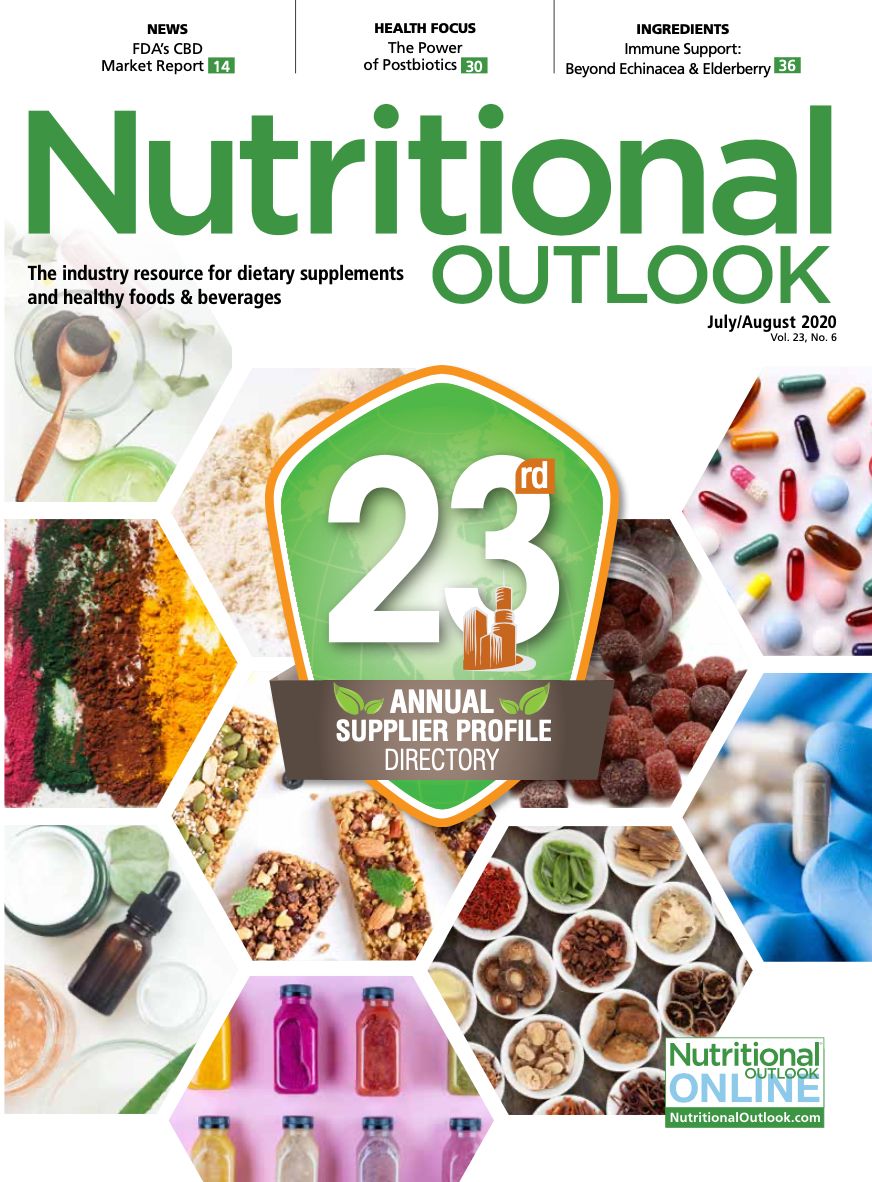How B2B businesses should communicate with customers during the COVID-19 pandemic
A communications expert’s advice for staying visible and being transparent and open with customers during the COVID-19 pandemic.
Photo © AdobeStock.com/Alexander.Shelegov

There is so much uncertainty in the “nothing is normal” COVID-19 crisis. Everything seems to be upside down, and life as we knew it is not the same. Individuals and businesses alike are still learning to adjust day by day. Goals and objectives are being scrutinized more than ever. Programs and processes are evolving to fit within a new way of life.
Businesses have so many questions. How long will this last? Are we resilient enough to withstand this? Can we take care of our employees? Will we be able to keep our processes up and running? Can we keep up with demand for certain products? How must our activities change? What can we do to make a difference? Because all of these questions may be difficult to answer, many business professionals may feel like retreating into a corner to simply “wait it out.” The uncertainty has many companies changing strategy and backing off from communicating with their customers.
However, as your business is searching for answers, your customers most certainly are, too. Now, more than ever, we all need to feel connected, informed, and reassured that things will be okay. While none of us have all the answers, now is definitely not the time to go dark or avoid communication with customers and other stakeholders.
Rather than keeping customers in the dark, it is vitally important to thoughtfully strategize ways to keep them informed about how the business is doing, changes that may impact them, and shifts in the way you conduct business together—most importantly, to show that you are there and you care.
But, what should you say? How much should you say? Where should you say it? How should you communicate it? How can we stay connected in the face of quarantines and event cancellations?
There are some specific areas of focus that may help guide your messaging and approaches to staying visible and connected. These important areas require attention from nearly every type of business right now. Looking at the ways these areas relate to your business and within the current environment will help in formulating a communications strategy that can help ease uncertainties and bolster your corporate and brand reputation. Staying visible and being transparent and open will prove to be ultimately good for business.
Let’s examine six categories to consider in guiding a salient communications strategy during this crisis and well beyond:
• Connections
• Customers
• Compassion
• Changes
• Channels
• Continuity
Connections
We are so fortunate to have so many apps, platforms, and services to help keep us connected, and those of us working from home have all quickly become accustomed to mute buttons, backgrounds, and unexpected meeting appearances from our pets and children. Without tradeshows and face-to-face meetings, it is vitally important to creatively expand the use of virtual solutions to stay connected, and potentially form even tighter bonds.
You many consider scheduling private video exploration and assessment sessions with specific customers to personally express that you care and are listening. Reinforce that you sincerely want to explore their pain points and work to ease their concerns. Let them open up and do most of the talking, while you take time to really listen to gain a deeper understanding of their unique challenges and current experiences. This kind of individual attention can go a long way.
Some companies are getting creative with video messages and updates from key team members. These short clips help remind viewers of the human side of business and reinforce that your company is still there for them. Keep the videos brief and honest as you strive to bolster your connections, and share updates with reassuring voices.
Standard cold calling is not really appropriate at this time, as the situation and distancing demand more sincerity and empathy in all of our connections. Keeping your connections authentic helps them endure and improves long-term success.
Use e-mail to reach out with information that may help solve a problem or improve understanding—such as clinical studies, infographics, whitepapers, research, or even updates to your processes that streamline the way you do business.
Connections are critical and must be constantly nurtured. Whether it is through opinion pieces in industry trades, e-mail, YouTube videos, LinkedIn messaging, or good old phone calls, empathy is essential.
Customers
Now, more than ever, customers should be at the heart of business strategy. Right now, we should avoid being fixated on metrics and numbers and instead ensure the focus is on people and on doing what is right for customers. In your outreach to customers, empathy is of the utmost importance.
The current environment brings unexpected changes on a daily basis, and each customer has been impacted in different ways. Check in with your customers and focus on making them feel heard. Structure personalized needs assessments and hone in on areas that are affecting their businesses the most. You can help set the tone by acting as a pillar of strength, offering to assist and find real solutions to help them succeed. Empathy, clarity, and guidance are what many people crave most right now.
Find ways to give your customers personalized attention. Take time to objectively listen to their issues and concerns. Reinforce that you’re willing to do what it takes to help them succeed. Once you’ve heard the concerns, show them that you mean business. These deeper insights can help chart a course for communications, content, products, and processes that deliver real benefits to your customers.
Certainly, you will encounter some customers who are more stressed than usual. Many people are feeling anxious and may react in unexpected ways. Remember not to take it personally, and instead, always come from a place of empathy and work to find meaningful advice and solutions that can help ease their burdens and improve their situations.
Opportunities abound to give customers personalized attention, gain more insights about their specific situations, and discover new solutions. Make sure what you share with them is meaningful, educational, relevant, and useful, and avoid the hard sell for now.
Relay to your sales team that their efforts must promote health and safety first. Reassure them that while sales may slump and pipelines may struggle for a while, it is okay. Making a concerted corporate effort to show compassion will help as things bounce back and will have long-term payoffs.
Corporate reputation and customer loyalty can emerge stronger than ever if you demonstrate to customers that you really are there for them when they need it most.
Compassion
Current conditions have forced business leaders to shift and hone the ways they think about and nurture their relationships with people and the planet.
We’re all in this together, and empathy and compassion must guide our communication and our actions. Now is the time to leave ego behind, practice humility, and find ways in which we can make life easier in the face of inescapable challenges. Today, many of us are making more efforts to seek out businesses that are making real, positive, and impactful changes. These do not have to be monumental feats. True compassion can be demonstrated simply by being open and transparent about your own challenges while making it a priority to help and respect others. Find ways to bring hope.
How can you help? The current environment is shedding new light on the importance of caring for one another. Companies and brands in the natural products industry are in an excellent position to provide health and wellness support. Sharing your knowledge, expertise, resources, and solutions on health topics can have meaningful impact and even change lives. Employees need reassurance, too, and internal communications should be as compassionate as your external outreach.
What is your business doing to make a difference? Let people know about any special outreach or programs you have put in place. If you have products that are shown to promote health or boost immune support, let people know about it. Have you put efforts in place to help healthcare professionals, frontline workers, first responders, or others? How are you taking care of your employees? Find ways to communicate these efforts without appearing too opportunistic or tooting your own horn. Again, compassion must be the overarching tone.
Corporate responsibility is more important than ever. Citizens around the world are calling for more socially conscious businesses that prioritize safety and wellness for people and the earth. Allow your outreach and communication to shine a light on sustainability efforts, nonprofits, charities, or resources that others might find useful. Invite others to unite with you in relevant causes or a common mission. Let people know what your company is doing to engage with and support both your local community and the world at large.
Changes
As we search for familiarity and normalcy, now is not the time for surprises or unexpected changes. Proactively inform customers and other stakeholders about new policies and programs your business is adopting to help them weather the storm. Wherever possible, make efforts to provide information about changes, which may include:
• Supply chain disruptions
• Product availability
• Policies and procedures
• Manufacturing
• Leadership/staff
• Temporary offerings
Read the market and stay abreast of changing trends and social shifts. Everyone is in uncharted territory so providing navigational tools and letting people know about course corrections is extremely valuable. Adjust your messaging to reflect on new approaches to current concerns. Now is also a good time to examine how customer needs are changing. What new opportunities may this uncover? How can your company adjust to these shifts to better serve customers and community?
Channels
We are more digitally engaged than ever. Communications strategies are shifting to accommodate myriad global changes, with many companies adopting more virtual and digital strategies more rapidly than any of us expected.
Use digital channels and platforms to keep your audience informed. Find new ways to leverage relevant communication channels to keep customers engaged. How might you personalize and tailor the use of e-mails, blog posts, digital magazines, newsletters, and social media? Look for creative ways to elevate messaging through the use of webinars, videos, virtual meetings, e-books, and surveys to provide insightful information, show genuine support, and form more meaningful relationships.
Businesses that demonstrate exceptional digital experiences and outstanding virtual engagement are much more likely to retain current customers and attract new ones.
Continuity
More than ever, people crave a sense of the familiar. While now is an important time to let people know of any disruptions or changes to normal activity, you can also let people know what’s the same! Provide some “communication comfort food” using reassuring and supportive messages.
Strive for some regularity in frequency, and content consistency, throughout your communication channels. Provide something people look forward to on a regular basis. Consider creating a communication routine or apply a theme to weekly outreach such as Motivation Monday to offer uplifting stories, good news, and motivational messages. Or, schedule a Breathing Room session consistently every Thursday encouraging participation in a five-minute virtual group breathing exercise to help calm collective nerves.
Continuity can help create a sense of well-being and reinforce your corporate and personal reliability. Work to bring harmony and regularity to communications and content across channels. Avoid abrupt, jarring changes, opting instead for consistent and calming messages.
Follow the Six Cs
Consider the ways your business may use these Six Cs to guide, elevate, and optimize your messaging and outreach strategies. If we all strive to provide sincere support and strengthen our connections, we will endure and thrive for many years to come.
About the Author
Communications professional Heidi Rosenberg has decades of B2B and consumer public relations, marketing, and brand management experience. She supports organizations ranging from nonprofits and small businesses to global enterprises, primarily within the natural products and environmental industries. Visit www.mightymopr.com.

Prinova acquires Aplinova to further increase its footprint in Latin America
April 7th 2025Prinova has recently announced the acquisition of Brazilian ingredients distributor Aplinova, which is a provider of specialty ingredients for a range of market segments that include food, beverage, supplements, and personal care.























